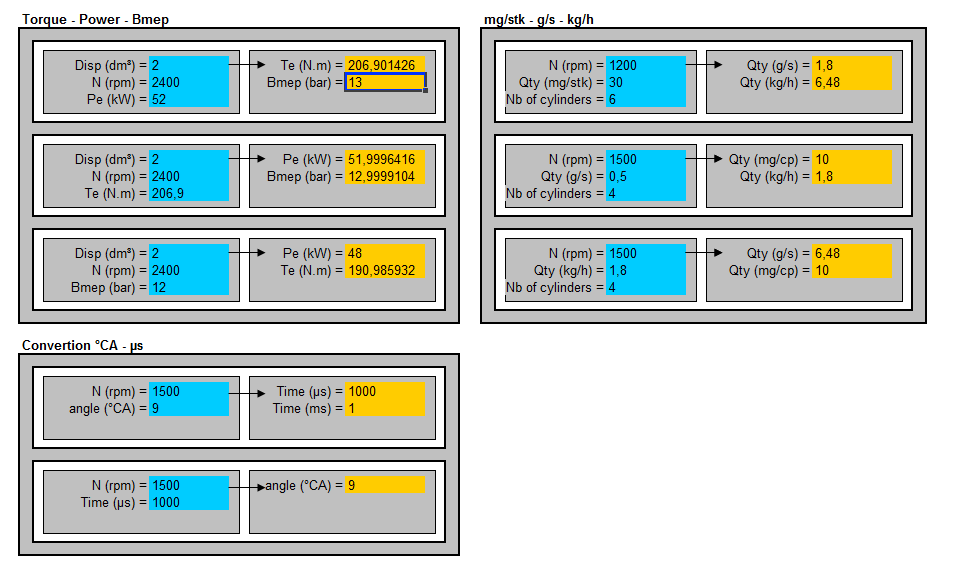In advance of the market launch of the next generation Acura NSX, the engineers leading the supercar’s development shared new technical details and design strategies with the automotive engineering community at the April 22nd SAE Detroit Section dinner, held in conjunction with the SAE 2015 World Congress and Exhibition. Additional information about the team’s efforts to achieve a true “New Sports Experience” included details of the NSX’s world’s first body construction process that helped create a multi-material space frame resulting in high body rigidity and the total airflow management system.
Acura’s First Application of a Multi-Material Body with Space Frame Construction
At the core of the NSX mission to deliver timeless sports car values is an aluminum-intensive, multi-material space frame. This innovative space frame represents a next-generation leap in body design with class-leading technology that is exclusive to Acura within the automotive market.[image_frame style=”framed_shadow” align=”center” alt=”NSX SAE Hero” title=”While the all-aluminum monocoque body of the original NSX was ahead of its time, current aluminum and ultra-high-strength steel-intensive body architecture has been taken to the limit for supercar design.”]https://www.car-engineer.com/wp-content/uploads/2015/04/NSX-SAE-Hero-Image.jpg[/image_frame]
While the all-aluminum monocoque body of the original NSX was ahead of its time, current aluminum and ultra-high-strength steel-intensive body architecture has been taken to the limit for supercar design.
“For this new NSX development, anything and everything that could offer incredible base rigidity and lightweight design was on the table,” said Shawn Tarr, principal engineer and Acura NSX body development leader. “We considered all-aluminum unibody, carbon fiber monocoque and space frame designs and ultimately engineered a multi-material space frame because it offers the lowest weight and best rigidity, precision and hybrid powertrain packaging capability of any design.”
A key advancement in casting technology allowed the NSX development team to realize a quantum leap in body design, for the first time being able to engineer a vehicle with castings in key locations for rigidity, that also support the ductility necessary for placement within crush zones.
World’s First Application of Ablation Casting1
The Acura NSX heralds the world’s first application of ablation casting technology in the automotive industry. Ablation casting combines traditional casting methods with rapid cooling techniques to offer the design flexibility and rigidity of casting with the ductility and energy absorption characteristics of extruded material.
Traditional castings provide the best rigidity in space frame and other body designs, but have traditionally suffered a major drawback: traditional castings are brittle. With the no-compromise performance goals of the NSX, a new casting method within the crush zones had to be used.
- The ablation process allows the ultra-rigid castings to be located within the crush zones and to function as large aluminum nodes, or junction points. Aluminum extrusions are then inserted into sockets in the ablation cast nodes, which act as fixtures that hold the space frame in place during welding.
- During the welding process, shorter stitch welds can be applied, enhancing the exceptional, repeatable precision of the NSX space frame construction by reducing heat deformation during the production process.
- Ablation castings also enable traditional aluminum castings to be used at strategic locations in the space frame and as the primary mounting points for suspension and power unit components, in addition to being the reference and temporary attachment points during the space frame construction process.
- Full space frame construction and vehicle assembly are conducted on-site at the new Performance Manufacturing Center (PMC) in Marysville, OH, providing a high level of quality control.
1 Ablation casting is co-developed for this world’s first automotive application with the original inventor of the process, Alotech Limited.[image_frame style=”framed_shadow” align=”center” alt=”NSX Castings & Suspension” title=”Ablation castings also enable traditional aluminum castings to be used at strategic locations in the space frame and as the primary mounting points for suspension and power unit components, in addition to being the reference and temporary attachment points during the space frame construction process.”]https://www.car-engineer.com/wp-content/uploads/2015/04/NSX-Castings-Suspension.jpg[/image_frame]
New A-Pillar Construction Technique
In addition to the world’s first casting technology, the NSX applies a new three-dimensionally formed ultra-high-strength steel A-pillar that provides high rigidity and precise shape specification tolerances.
The previous generation NSX had a thin A-pillar that provided very good outward visibility. Reflecting this heritage with modern rigidity and roof crush performance requirements demanded this new, ultra-high-strength production method.
The NSX represents the strategic integration of multiple materials to achieve optimal body performance for numerous targets, including rigidity, dynamic response, superior fit-and-finish and occupant protection:
- The aluminum-intensive space frame is complimented with crafted ultra-high-strength steel and anchored with a carbon fiber floor together producing body performance at its peak.
- Drivers will experience all of the handling provided by the Sport Hybrid SH-AWD power unit because it is communicated through the most rigid body Honda designed.
Total Airflow Management
To meet the challenge of the performance targets, packaging design and styling for the next generation Acura NSX, the development team had to totally re-imagine the thermal and aerodynamic engineering for this modern supercar so that maximum energy is extracted from the flow of air around and through the NSX with the highest efficiency.
This new total airflow management strategy supports component cooling, aerodynamic performance (drag and downforce) without the use of active aero technology.
Computational fluid dynamics (CFD) was used extensively during development to allow the U.S.-based development team to maximize the performance of a power unit being developed in Japan. CFD models were run on computers totaling many years’ worth of computational uptime.
Thermal CFD was used in two ways during development: first, for the proof-of-concept in establishing heat management strategy at the earliest development stage and second, for continuous thermal performance improvement as the vehicle matured through development. Extensive involvement of thermal CFD with design engineers during the development enabled maximum design optimization.[image_frame style=”framed_shadow” align=”center” alt=”NSX Total Airflow Management, Powertrain & Heat Exchangers” title=”Thermal CFD was used in two ways during development: first, for the proof-of-concept in establishing heat management strategy at the earliest development stage and second, for continuous thermal performance improvement as the vehicle matured through development”]https://www.car-engineer.com/wp-content/uploads/2015/04/NSX-Total-Airflow-Management-Powertrain-Heat-Exchangers.jpg[/image_frame]
Along with the use of advanced CFD, wind tunnel and real world testing, the development team also employed computerized lap-time simulation models of some proving grounds that could then be run on chassis-dynamometers allowing testing and validation of computer models for thermal management.
- The all-new NSX employs 10 air-cooled heat exchangers responsible for cooling the front twin-motor unit (TMU), twin-turbo V6 engine, rear direct-drive electric motor and 9-speed dual clutch transmission (DCT).
- The new twin-turbocharged 3.5-liter V6 engine at the heart of the Sport Hybrid SH-AWD power unit requires the greatest cooling and receives it through three radiators: one center and two side units to get maximum airflow volume and efficiency. The center radiator is tilted forward 25-degrees, allowing optimized configuration that best utilizes the inherent pressure gradient while maintaining the low center of gravity targets of the NSX’s Advance Sports Package.
- Condenser and power drive unit (PDU) coolers are packaged in front of the center engine radiator.
- The TMU is cooled passively through strategic use of air in the front motor room and by a heat exchanger mounted in front of the right engine sub-radiator.
- The 9-speed DCT is cooled by two heat exchangers, one mounted in front of the left engine sub-radiator and the other in the engine compartment.
- Twin-intercoolers located in the signature side intakes are used to cool the intake air charge.
Supercar Aerodynamics
NSX achieves improved aerodynamic balance and supercar aerodynamic downforce without the use of active aero. Aerodynamic drag is minimized, even while moving large airflows through NSX as it inhales and exhales. Aerodynamic downforce is created through the total airflow management focus on utilizing airflow through each vent, as NSX exhales, and through more traditional aerodynamic shape optimization.
NSX has undergone extensive testing at the company’s wind tunnel in Raymond, Ohio, using detailed 40-percent-scale models that replicate all of the intake and exhaust vents, heat exchangers and major under-hood components. These scale models replicate drag and lift performance with good levels of approximation. It has been verified and put through its paces at the company’s full-scale wind tunnel in Japan, and on real and simulated proving grounds throughout the world.
Total airflow management vents and ducting also help create strong downforce for NSX and were tuned to optimized forms with aerodynamicist and designer input during working wind tunnel sessions.
- Six vortices flow at the rear of the NSX including those that support creating the highest downforce across the rear deck lid.
- Flowing from below the car and exiting through optimized lower, rear diffuser fins is a critical vortex that further anchors NSX to the ground. The fins are not parallel to each other, but are narrower toward the front of the car and wider at the rear. This design creates low pressure and further maximizes downforce.
Sport Hybrid Super Handling All-Wheel Drive
The Sport Hybrid SH-AWD dynamic torque vectoring technology applied to this new NSX represents research and development that has been ongoing for well over two decades.
While the NSX provides a new sports experience with ‘on rails handling,’ its Super Handling technology was optimized to enhance the driving experience by responding instantaneously and intuitively to the will of the driver.
- Super Handling is improved in NSX where the strengths of electric motors – delivering zero delay acceleration – allows the NSX to offer dynamic torque vectoring even at low vehicle and engine speeds.
- Super Handling logic has progressed along a parallel path with hardware. While many advanced automotive technologies are focused on feedback, measurements of how the vehicle is reacting, NSX applies additional technology to focus on accurately responding to driver input through immediate application of torque at each wheel at any moment.
- Using computer-aided engineering (CAE) optimization software, engineers created a double-wishbone, double lower control arm front suspension that decouples the twin-motor unit (TMU) torque from the driver’s experience at the steering wheel.
- Variable gear ratio steering is applied to further enhance the driving dynamics of the all-new NSX.




















